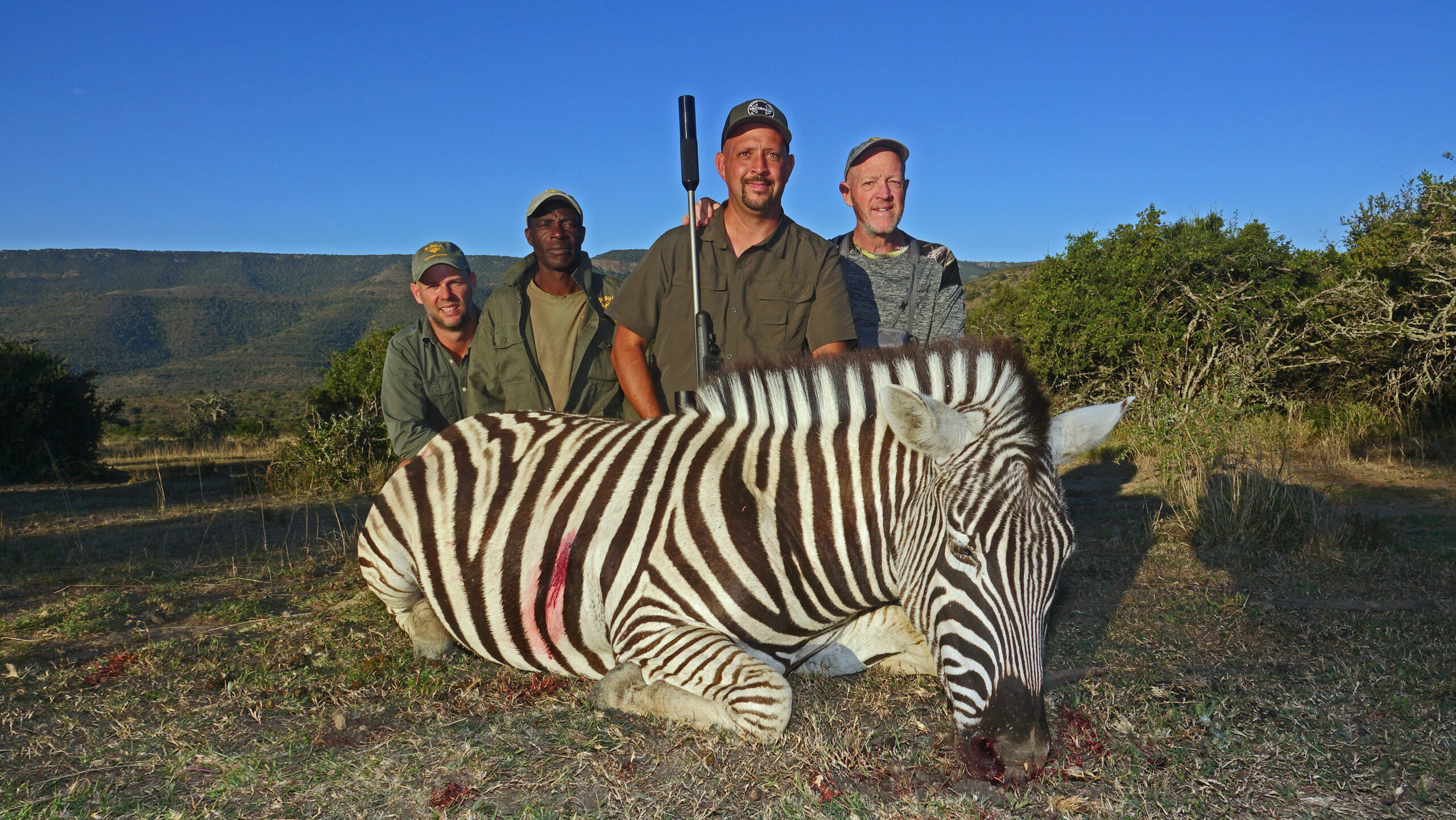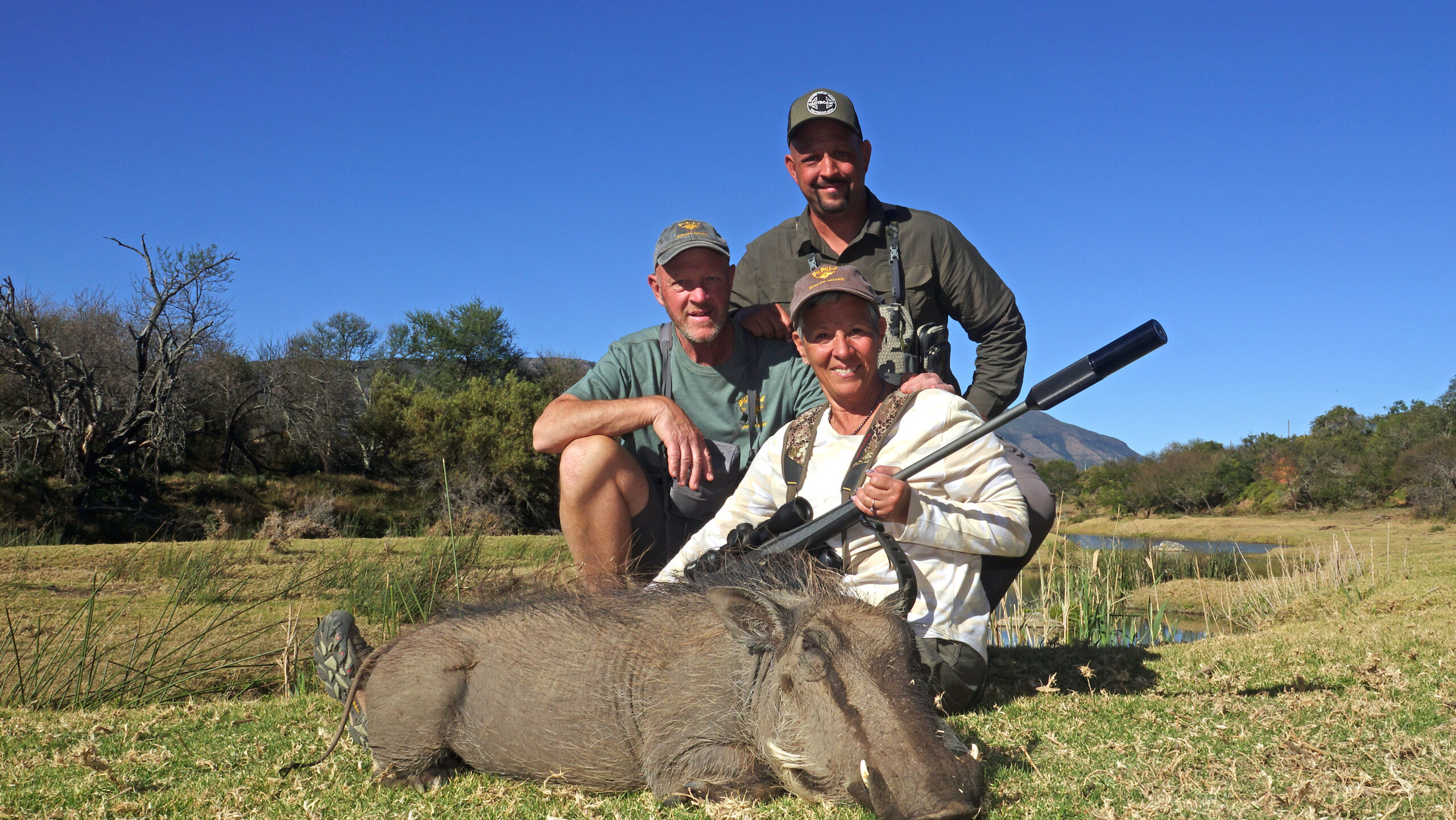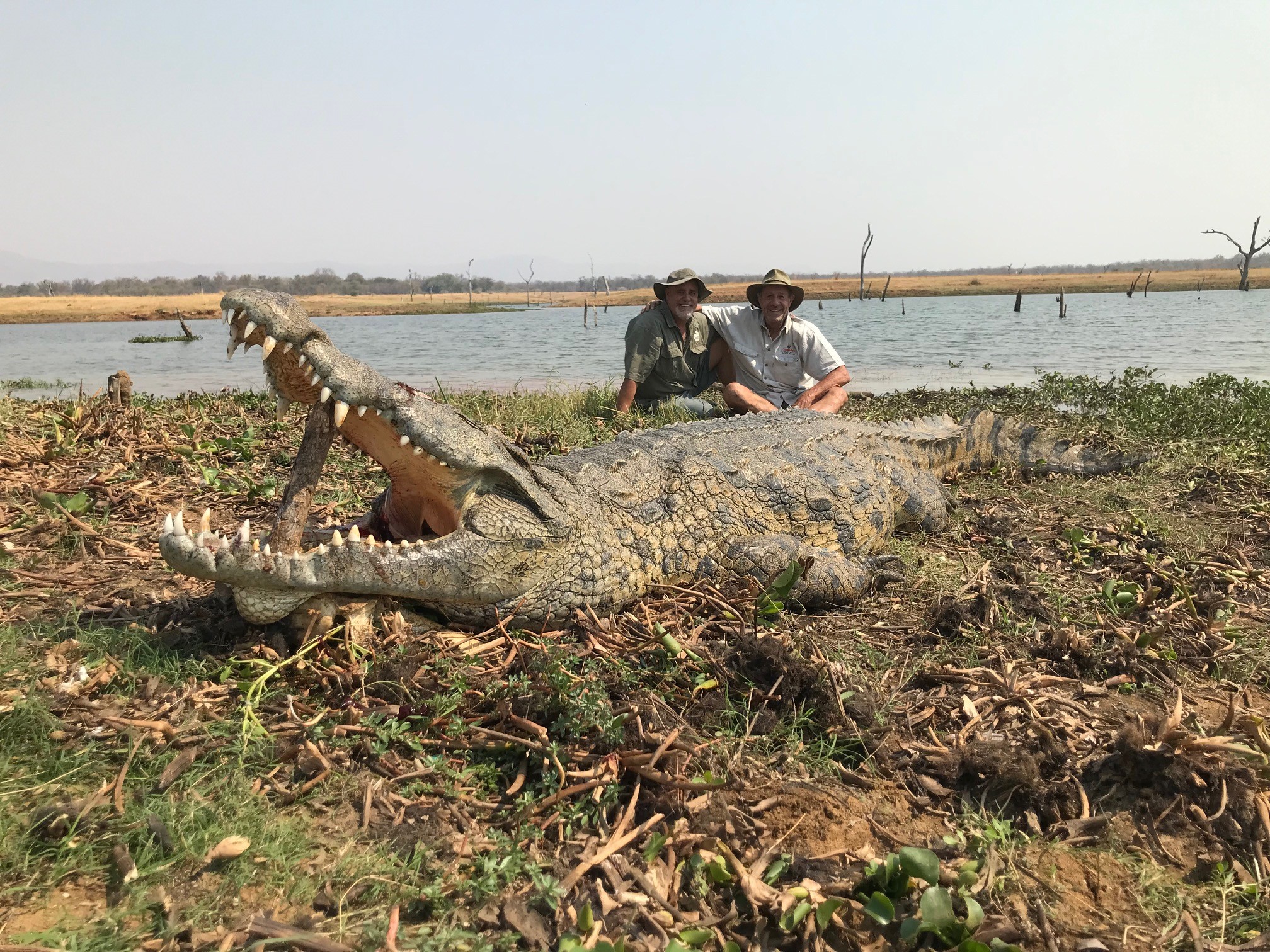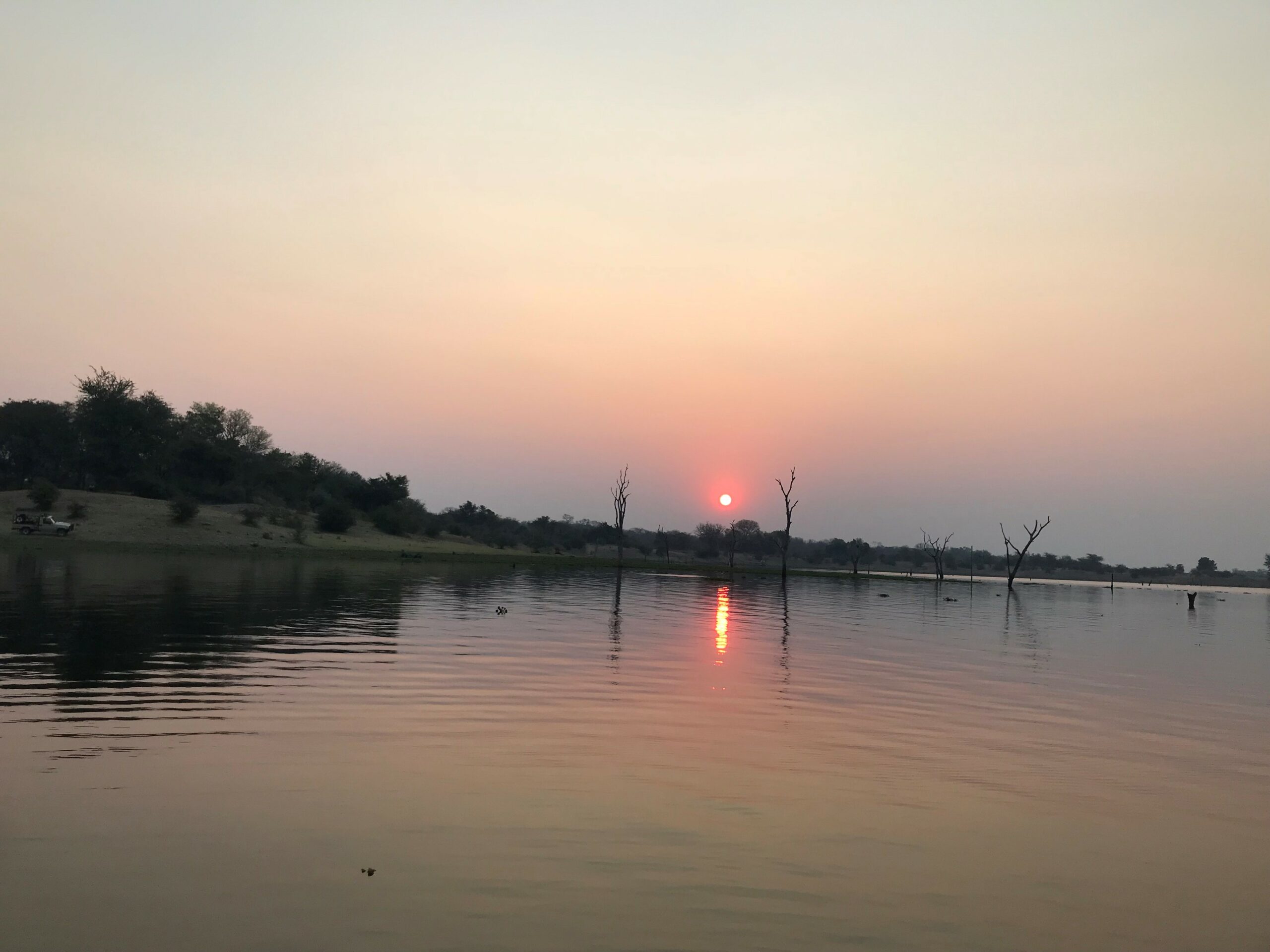One for the Road
Very likely a clone of the rifle Ruark took to Africa in 1951: A Winchester Model 70 in .220 Swift. A very fine combination for its intended purpose—varmints at long range—but a dreadful choice for an African safari.
By Terry Wieland
The Last Laugh
The .220 Swift in Africa
Many years ago, a well-meaning friend gave me a copy of a book by a noted anti-hunting writer. I don’t recall the author’s name, or the title of the book—long-since trashed—but one thing sticks in my mind.
The frontispiece, the quote that appears on the very first page, was a passage from Robert Ruark’s Horn of the Hunter. In it, Ruark recounts an episode in which he shot a hyena with a .220 Swift. The first shot did not do the job, nor did the second. Nor the third. After he’d struck the hyena with seven bullets and the poor critter still wasn’t dead, Ruark discarded the Swift, called for his .470 Nitro Express, and finished it off properly.
Disgusted, he informed all and sundry that he would “never again shoot at any animal he respected” with the Swift. To the best of my knowledge, he never did.
When I first read Horn of the Hunter in the 1960s, I had no first-hand knowledge of the Swift and was blissfully unaware of the controversies that had dogged it since its introduction by Winchester in 1935. For its intended purpose, which is dispatching varmints such as woodchucks at long range, no better cartridge has ever been developed. Its detractors, however, insisted that it burned out barrels in a few hundred rounds, that its accuracy was erratic, and that it could not be loaded down to counter either of these supposed faults.
One accusation aimed at the Swift that cannot be denied, however, is the complete unsuitability of its 48-grain factory bullet for use on anything bigger than an underfed coyote. With a muzzle velocity of a sizzling 4,110 feet per second (fps), it was designed expressly to open up extremely rapidly on contact. Crows, prairie dogs, woodchucks, and similar beasts are not very thick. The bullet needs to expand rather than penetrate, because little penetration is required. As well, this virtually ensures that no Swift bullet will ever ricochet; they fly apart on touching so much as a twig, which is very desirable in settled areas.
Should Ruark have known this? Maybe, or maybe not. He was, admittedly, a shotgunner, not a rifleman. Jack O’Connor, in one of his more acid moments, said Ruark “lacked ballistic sophistication.” In 1953, when Horn of the Hunter appeared, Ruark probably would have agreed with him. It was only later, after spending a good portion of his time in Africa, hunting everything up to and including elephants, that Ruark began presenting himself as an authority on rifles.
Much as I admire the man in many ways, and for many things, he is about the last person I would take advice from when it comes to big-game rifles.
Later on, after the episode with the Swift, he developed an infatuation with the .244 Holland & Holland, a rather ill-conceived creation from the venerable London firm that consisted of the .375 H&H necked down to .243 (6mm). In one article, Ruark said its velocity was so high, and its trajectory so flat, that no adjustment was needed, up or down, for ranges all the way out to 400 yards. Huh? Methinks not.
Ruark even went so far as to say he was getting rid of his other, bigger rifles, and using only the .244 in future. Presumably, he hung onto his .470 in case anything went wrong.
Few people today even know the .244 H&H ever existed, and when you raise the issue with the rifle people at Holland’s, they tend to change the subject at the first opportunity.
Trajectory aside, the .244 H&H claimed 3,500 fps for a 100-grain bullet. It was introduced in 1955, and Ruark got his hands on one sometime after that. It’s odd that he would take to it the way he did, only a couple of years after his experience with the Swift. In 1955, 100-grain expanding bullets in .243 were nothing to write home about. I don’t know what bullet Kynoch loaded it with, assuming Kynoch loaded the ammunition, but I suspect it was not something you’d want in your hands in a tough situation.
One thing the Swift and the .244 H&H had in common was that they were marketed as being astonishing killers of big game as well as varmints, with the usual tales of large animals dropping “as if poleaxed” or “in their tracks” if so much as touched by one of these high-speed projectiles.
The mid-50s were also the era in which Roy Weatherby was first really beating the drums for his creations, taking his .257 and .270 Weatherby to Africa and sending back outlandish reports of their effect on everything up to, and including, Cape buffalo.
These high-speed wunderkind have been proven, over and over, to work spectacularly sometimes, but fail just as spectacularly at others. Slower, heavier bullets, however, work doggedly time after time—rarely spectacular, but always effective if the bullet’s put in the right place or anywhere close.
One can trace the history of “high velocity as super-killer” all the way back to James Purdey’s initial work with express rifles in the 1850s, wherein he discovered that lighter bullets traveled faster and sometimes—sometimes!—dropped animals where they stood.
Obviously, the Swift was not the first cartridge to be touted this way. In America there was the .303 Savage (1895), then the .22 Savage High Power (1911), then Savage’s .250-3000 (1915). Arthur Savage was as much a promoter as Roy Weatherby, and he sent hunters all over the globe to hunt big beasts with small, fast bullets, and followed it up with magazine articles about their wondrous performance.
In one of his articles in Field & Stream, Ruark told of going off to the Campfire Club, north of New York, to sight in his rifle, having not held a rifle in his hands since he’d returned from Africa 18 months before. Well, other guys have gone on safari with rifles they’ve never fired, and tales of their performances are standard fare when professional hunters get together and the whisky flows.
At this late date, it’s impossible to tell how much influence Ruark’s story might have had on the career of the .220 Swift. Ruark was a hugely popular writer, not just on hunting, but as a syndicated newspaper columnist, and his book was an instant best-seller. I would imagine it was widely read in anti-hunting circles, and presumably that’s how the above-mentioned anti-hunting author saw the tale of the hyena that he later used to introduce his own book.
The .220 Swift was discontinued by Winchester only eight years later. It was already banned in several states for hunting deer and similar animals. One thing we can say for sure, that anecdote, on top of the Swift’s other travails, wouldn’t have helped it.
For the record, I cannot think of a single use for the .220 Swift on a normal hunting safari, although I admire the cartridge greatly for doing what it was designed for, and doing it superbly well. Even after almost 90 years—wildcats and short-lived wonders like the .22 WSSM aside—no cartridge has come along that can do what it will do.
What about today’s heavy-for-caliber bullets in .224—the 60- and 70- and even 90-grain bullets some are using for long-range shooting? I still can’t think of a use for one in Africa. Sorry.
One has to admire Ruark for putting that story in print, in gory detail. It paints a grim picture of the Swift, but does not flatter Ruark by any means. At best, he looks like a beginner who took bad advice—which, in fact, is exactly what he was. But at least he owned up to it.
(I can almost hear the salesman in the gun department of Abercrombie & Fitch in New York extolling the virtues of the .220 Swift for Africa. As if he’d know.)
To the best of my knowledge, no other hunter in far-off lands ever returned to mention any failure, of any kind, with whatever wunderkind cartridge he was using.
It’s ironic that in his attempt at total honesty, to tell the story of a safari as it actually was and “without all the derring-do,” Ruark handed his detractors (and ours) some rather potent ammunition with which to attack him. The story was quoted out of context, and only the hyena’s suffering was included, with no mention of Ruark’s own reaction and resolve never to make that mistake again. In a way, the hyena had the last laugh—which they are noted for.
Is there a moral? Yes: Be careful whose advice you take, and get to know all your rifles, intimately, before you board the plane.


















































































